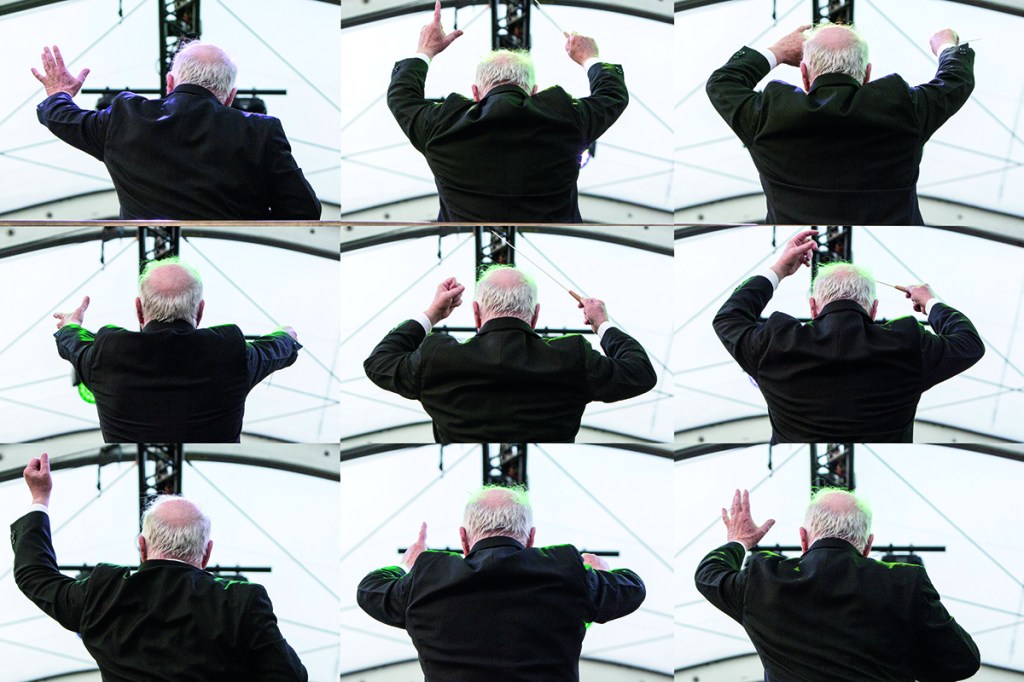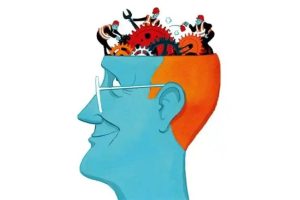One of my friends has a freakishly sharp ear for tiny nuances in the performance of classical music. God knows how he acquired it, because his personal tastes don’t extend much beyond early Madonna and late Beyoncé (‘far more vocally secure than Rihanna’). That’s sad for him but handy for me. If I catch him in a good mood I can make him sit through five interpretations of La Mer, and he’ll give me fresh thoughts on which conductor has the best grasp of Debussy’s tonal architecture. They’re fresh because he’s coming to it without preconceptions about how the piece ought to sound: he’s never heard it before and probably never will again.
Last month I was trying to compare two cycles of the Beethoven piano sonatas, one recorded in the 1960s and the other during this year’s lockdown. I hijacked my friend and played him the same five or six movements from both of them. I didn’t mention any names, just in case they affected his judgment. Instead I referred to them by their record labels. ‘EMI’ was the historic pianist and ‘DG’ the modern one. (It couldn’t have been the other way around because, sadly, EMI disappeared in 2013 and all its recordings are historic.)
Anyway, my friend immediately spotted that the first pianist favored extremes of tempo and dynamics: he didn’t so much play fortissimo passages as detonate them. The second, as he also noticed, leaned heavily on his left hand and generally seemed less agile. That was clear from the start. In the Prestissimo finale of Op. 2. No. 1 in F minor, the right hand chops out three fat chords over frantic triplets — first quietly and then noisily. EMI conveyed the drama brutally, hammering home the ff chords. DG dissipated it by pawing at them. No great loss, in my opinion, since I’ve always found this one of Beethoven’s uglier inspirations. But it’s followed by one of his loveliest: a broad-arched melody in which the right hand, first in single notes and then in octaves, soars upwards and then finds its way back in a halting dance. Here both performances tried to make the treble sing, but only the recent one succeeded. ‘The older guy sounds bored, like he can’t wait to get back to the fast bit,’ said my friend.
He knew what I meant by the ‘luminous’ touch of EMI, though I struggled to explain how it’s achieved. I assume it’s a combination of pedal technique, a hyper-attentive ear for how long it takes a note to decay, and what Alfred Brendel calls ‘piano playing that rises from the keys’, producing a fuller, rounder effect than simply dropping the fingers on them. Brendel himself played luminously in his later recordings, which not coincidentally were also his most spontaneous: any hint of calculation and the glow disappears. We jumped to the song of lament at the heart of Op. 110 in A flat, perhaps the only moment in the 32 sonatas where Beethoven reveals his private agony. In the old recording, this sublime aria is stabbed out by the right hand above the monotonous pumping of bass chords; to prolong our own agony, EMI wraps it all in mock profundity. ‘Look at me, everyone, I’m being introspective,’ he yells. DG, by contrast, creates a flickering effect with tiny adjustments of dynamics. The melody is both faster and more faltering, as Beethoven intended. The misjudgments of 50-odd years have been corrected.
And, as you may have worked out by now, by the same fingers. That was the real reason for my evasive references to EMI and DG. I wanted to see if my friend would realize that he was listening to one man. He didn’t. I’m not sure I would have either, listening to the music blind (though, once you know, you can hear the similarities). But if you’d told me in advance that it was a single pianist, and that he’d started his first cycle in September 1966 — that is, just before the Beatles started work on Sgt. Pepper’s Lonely Hearts Club Band — then I’d instantly have guessed his name.
It can only be Daniel Barenboim, and the reason I mention the Beatles is that while he was recording Beethoven for EMI they were in the next-door studio in Abbey Road. He even complained about the noise, apparently — though they hit it off when they eventually met. ‘They asked me thousands of questions about Beethoven, and I asked them thousands about songwriting,’ Barenboim recalled. ‘The encounter with the Beatles was as stimulating as when I met Stravinsky in Rome in 1962.’ Barenboim and the Beatles: it’s not such an odd juxtaposition, because in classical circles the young Argentine-Israeli was the fifth Beatle, jetting around the world on a cheeky mission to upstage Arrau, Brendel and Serkin as Beethoven pianists and to steal Sir Adrian Boult’s laurels as an interpreter of Elgar, of all unlikely composers.
From the outset, Barenboim made it clear that he was as much at home standing on the podium as sitting in front of a Steinway. Not satisfied with the honor of playing the Beethoven concertos under Otto Klemperer, he grabbed the baton to conduct Artur Rubinstein in the same works, earning himself the first of six Grammy awards. He went on to become chief conductor of the Orchestre de Paris, the Chicago Symphony Orchestra, La Scala opera house in Milan and the Berlin Staatskapelle. For years he was a fixture at Bayreuth and can claim to be the finest Wagner conductor of his generation. He has recorded three cycles each of the Beethoven and Bruckner symphonies, two of the Brahms and all the symphonies of Schubert and Schumann. There’s no complete Mahler cycle, but he has recorded the Ninth three times. He’s a champion of the music of Elliott Carter and Pierre Boulez. He founded his own West-Eastern Divan Orchestra of young Arab and Jewish musicians and, determined as ever to have his cake and eat it, was the first person to hold Israeli and Palestinian citizenship simultaneously.
Other big-name conductors have covered as much musical territory, of course, but unlike Daniel Barenboim they haven’t also carpet-bombed the mainstream piano repertoire. He’s given us Bach’s Goldbergs and Forty-Eight; two sets of Mozart piano concertos and one of the sonatas; a Schubert sonata cycle; the Chopin concertos, sonatas, waltzes and nocturnes; lots of Schumann and Liszt; the Brahms concertos with Barbirolli (d. 1970) and Dudamel (b. 1981); plus a fair chunk of Debussy. And, in addition to the two Beethoven cycles I’ve been listening to, four others are commercially available, three of them recorded live.
As he gets older, Barenboim has become more and more keen on recording Beethoven sonatas in front of audiences — which is brave, given that old pianists make more mistakes than young ones. When I heard him at the Festival Hall in London years ago, there were just enough smudged notes to distract me from the music; you never knew when the next little accident was coming. But I admired the burnished beauty of his tone, which wasn’t something I remembered from that shouty and self-conscious 1960s boxed set, long since offloaded to a charity shop. So when the 2020 lockdown cycle came along, I was keen to hear it, confident that Deutsche Grammophon would have patched over any nerve-jangling wrong notes. On the other hand, if Barenboim no longer ‘had the chops’, as they say, to meet Beethoven’s more sadistic technical demands, then his engineers couldn’t hide the fact.
Sure enough, there’s evidence of wear and tear. Unlike Artur Schnabel, whose motto was ‘safety last!’, the 77-year-old Barenboim looks before he leaps. You can hear him slowing down to preserve his articulation, which would be a hanging offense if he caught someone in the Staatskapelle doing it (he doles out ferocious chewing-outs in rehearsal). But after a while I stopped caring about the vagaries of bis inner metronome. Barenboim says the coronavirus gave him the chance to rethink the sonatas, and the result is a rebalancing of melody and accompaniment: again and again he reveals the ingenuity of Beethoven’s passagework more effectively than younger pianists who step on the gas. He takes his time over the terrifying angular fugue of the Hammerklavier (unlike the aging Schnabel, who sounds as if he’s tackling Boulez’s Second Piano Sonata). There’s the odd fumble, but the combination of a slower tempo and Barenboim’s fascination with inner voices shows us more of the passing landscape than usual. He understands the architecture. In many performances, the final chord is an anticlimax after what Charles Rosen calls a ‘torrent of energy and torrent of dissonance’. Barenboim’s solution half a century ago was to roll the notes in the left hand. Now he does it again — but subtly, so that instead of sounding like a pasted-on special effect it really does underpin the structure. Elsewhere, failed experiments are ditched. The Adagio molto introduction to the Waldstein finale, which young Barenboim stretched to 4’53” with the aid of pretentious pauses, now comes in at 3’48”. The dead air is gone — perhaps the experience of conducting Bruckner has taught him the dangers of overindulging in silence — and now we hear the music for what it is: a startling anticipation of Beethoven’s ethereal late style.
Gramophone has trashed the cycle, but that’s no surprise. The magazine has fallen in love with Igor Levit’s slick, soul-destroying cycle, even devoting a sycophantic supplement to the pianist. Barenboim is the antidote to Levit: impulsive, quirkily perceptive, full of the radiant insights that develop over a lifetime and often find their most potent expression after a great pianist has passed his or her technical peak — for example, in Wilhelm Kempff’s only live Beethoven cycle, recorded in Japan in 1961, or Alfred Cortot’s 1942 Chopin Etudes, both of which are more battle-scarred than the new Barenboim. You can push things too far, of course: Cortot’s 1950s recordings are painful, and Rudolf Serkin, who leaves me cold at the best of times, should have pulled the plug on the labored Mozart concertos he recorded with Abbado in his eighties. But pianists age at different rates and some of them come back from the dead. Towards the end of his career, Vladimir Horowitz’s pill-popping left his technique in ruins — but then he cleaned up his act, and in his final recordings we hear a miraculous combination of mischief and serenity. On November 1, 1989, four days before he died, the 86-year-old pianist recorded a little-known Liszt Prelude that Harold Schonberg, feared critic of the New York Times, praised for its ‘extraordinary richness and intensity’, the product of a sound-world that only an old magician could bring to life.
One could say the same of a glowing interpretation of Chopin’s B flat minor Nocturne by Mieczyslaw Horszowski that, as András Schiff remarked, showed that he was still growing as a musician — at the age of 96. It goes without saying that Horszowski couldn’t possibly have re-recorded his celebrated Hammerklavier at that age, and I hope that Barenboim, having pulled off the extraordinary feat of playing it beautifully at 77, will retire it from his repertoire. But his recent Elgar Symphonies with the Staatskapelle show that he’s at the peak of his interpretative powers as a conductor, and what these new Beethoven sonatas suggest is that as a pianist he’s now ready to join other old pianists on a different sort of peak, one where technical demands are scaled back in order to create a new luminosity of sound.
This article was originally published in The Spectator’s February 2021 US edition.


















